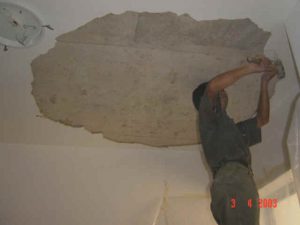Plaster and Skimcoat
Defect and Repair
| Plaster | Defect | Repair |
| Flaking of Top Coat due to bond failure | If the affected area is large it will be preferable to remove the whole coat, but if small the loose material should be removed, together with any loose or friable undercoat. If the undercoat is smooth it should be roughened or treated with a spatter coat or a bonding agent before applying the new topcoat. This should not be too rich cement and the surface should not be highly trowelled.
Where undercoat is removed the joints, if it is brickwork then it should be raked out if possible before making good. A thrown-on (rough cast or pebble dash) finish would be advantages. |
|
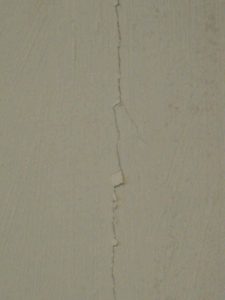 |
Cracking | If the cracking of the rendering is the result of cracks in the structure the latter should be dealt with first. The damaged rendering can then be made good with a mix which should not be so strong, and finished with some overall decorative treatment. If the cracks are extensive a better alternative might be to apply some form of weather cladding. The edges of the patch should be undercut and the backing well hacked for the key.
If the cracking is confined to the rendering and this has not become loose or detached from its base it will often be sufficient to decorate the whole area with cement paint or with one of the relatively new plastic-based paints, sometimes containing fibrous fillers, which are of a tough nature but able to accept some movement. If, however, the rendering has become loose in places, and especially if some has already dropped a choice must be made between making a repair or removing the whole rendering. Small areas can be patched and this will often resorted to in view of the commonly experienced difficulty in removing the rest of the rendering. Patched areas will generally need to be decorated because of the difficulty of matching the existing rendering.
|
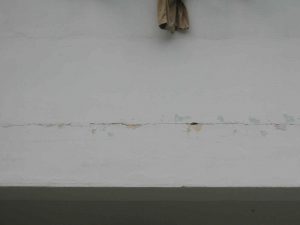 |
Predominantly Horizontal Cracks | Nothing can be done to repair the rendering without taking it all off and this is seldom economical. To prevent the cracks from the rendering widening further still and putting the structural stability of the building at risk it is essential to undertake work that will stop further sulphate attack of the mortar. The only course is to prevent water from reaching the brickwork and the provision of some form of rain screen is the most effective.
Re-rendering direct on the brickwork will very likely fail in the same manner as the original and should be considered only if the defective area is small. The original rendering is easily removed and low cost remedial work is important. Re-rendering large area will be more successful if it is applied to a proprietary waterproofing lathing fixed to the brickwork. Applying a coat of elastomeric waterproof membrane to the plaster surface. |
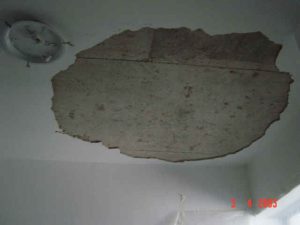 |
Delamination | If however, the rendering has become loose in places, and especially if some has already dropped, a choice must be made between making a repair and removing the whole rendering. Small areas can be patched and this will often resorted to in view of the commonly experienced difficulty in removing the rest of the rendering. Patched areas will generally need to be decorated because of the difficulty of matching the existing rendering.
Remove all loose materials by wire brushing and clean the wall free of all powdery residues, then re-plaster using bonding type plaster. If the concrete surface cannot be readily cleaned it may be advisable to apply a bonding agent before re-plastering.
|
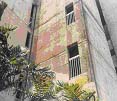 |
Staining | Constant maintenance of the eternal rendering is one method of keeping the staining at minimal level. However, main consequences of staining can be kept low by adopting good design practises, which will discourage the accumulation of dirt particles on the surface of external rendering. |
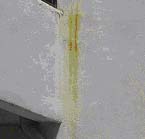 |
Staining | The cracks should be filled in with plaster or mortar and then a coat of paint given to cover over the rust stains. Where The stain marks may be removed by using a mildly acidic detergent. |
| Molding due to moisture penetration | Plastering work should be protected at all stages of its life from persistent attack by water or moisture through the undercoats or against the finished surfaces.
In persistently damp condition due to either prolonged or delayed drying out of the structure and the plaster or by accidental penetration of moisture, mould growth may occur. This can be rectified by the use of space heater or dehumidifier. Though it will give rapid results, normal drying can be encouraged by the provision of ventilation, e.g. opening the window, etc. |
Note: For more defects, please refer to the Defect Library.
